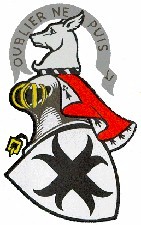 |
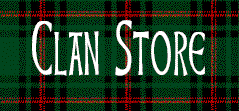 |
 |
 |
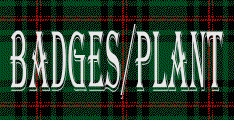 |
 |
 |
 |
 |
 |
 |
 |
 |
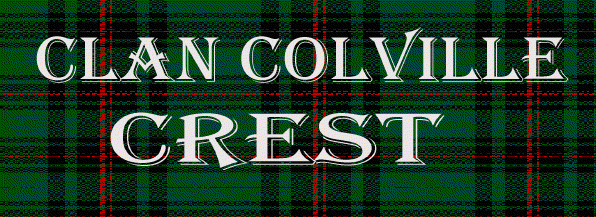
 |
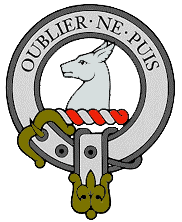 |
The left image is the Colville "Arms", the official insignia of the Chief, it may be used only by them as recorded in the Lyon Register. In other cases, the chiefs' "Arms" of old can only be reconstructed from the differenced versions recorded by thier surviving cadets or from ancients armorials. The Arms can be found on the Scotland of Old Clan Map, made by Bartholomew, listed under Viscount Colville of Culross.
The center image is the Crest, its the emblem from the top of the helmets of the Arms. When encircled by a stap-and-buckle bearing the chiefs' motto or slogan, his Crest may be worn as a Badge by all of his name or clan. Also, they may record versions of his Arms with some mark of difference determined for them by the Lord Lyon King of Arms. This is to distinguish between clansman and chief, for it is only the chief that is able to wear the crest with out the belt. The conventions set, allow the clan members to display the crest without any heradic infringement, which can be a major concern in countries with heraldic authorities.
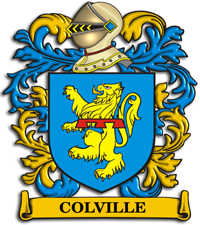 |
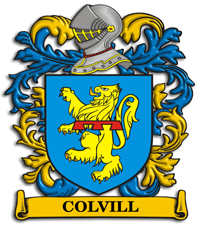 |
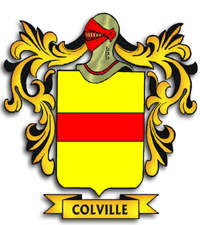 |
The above images are the English version of the Coat of Arms, and is not used by the Clan system, but for the families which remained in England and Wales and used the Coats of Arms flown on castles, homesteads, etc.
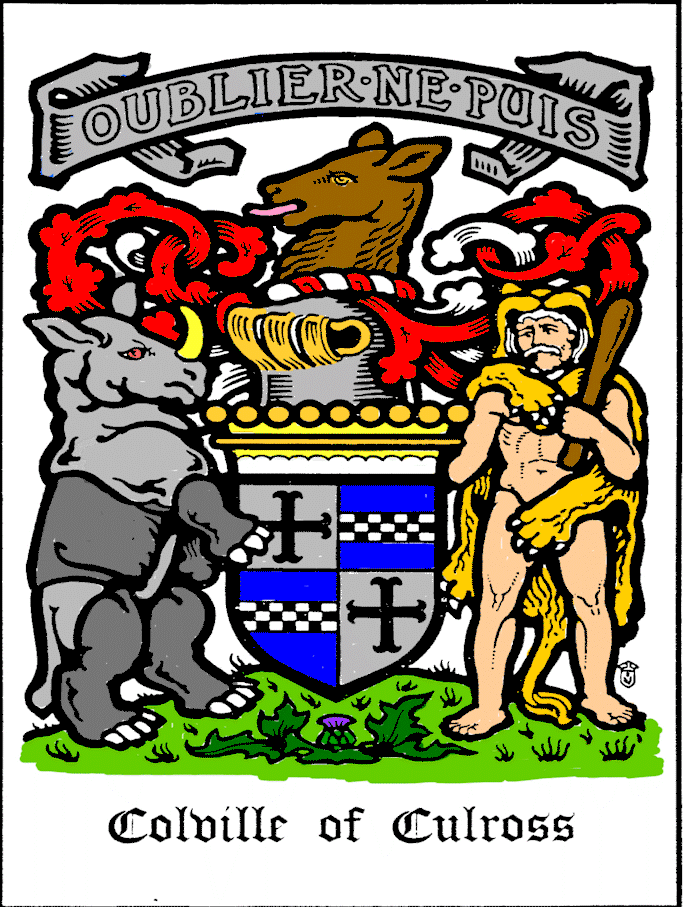
The heraldic record of the Arms is the following: "Quarterly (partitioned), 1st & 4th, Argent (silver or white), a cross moline, Sable (black); 2nd & 3rd Gules, a fess chequy, Argent (silver or white), and Azure (blue)."
The heraldic record of the badge is the following: "A hind's (female red dear) head couped (cut off cleanly) at the neck argent, charged with a trefoil slipped vert."
It is a proud thing to be able to display ones heritage, but please remember that the crest is not individual Property, but a symbol of the clan and the property of the Clan Chief.
Coats of arms were used initially in the 12th century as a means of helping combatants know who was on their side in the field of battle. The designs used were simple but distinctive, so that correct identification could be made quickly in battle. The symbolism became more complex and often communicated something about the bearer's family, name, status, or place of residence.
As stated in Burke's General Armory, an authoritative resource on heraldic symbols and language gives the following description of the Colvil or Colville family crest and coat of arms:
Using the list of Heraldic terms describes the meaning of the following words:
French word for silver, one of the basic tinctures or colors of medieval shields. The French word "moline" means mill. The cross moline resembles the metal straps that strengthen a millstone. The points at the ends of the straps were split and flared outward. The cross moline was used to indicate the eighth son.
Red, a common color in heraldry. The red cross was often found on arms of those associated with the English court. A canton is a square located, unless otherwise indicated, in the "chief dexter" or upper left corner of the shield, extending approximately 1/3 of the width of the shield. The upper right corner was known as the "chief sinister" position. It is important to know that the "chief dexter" position is on the right hand side of the shield bearer. Thus, the "chief sinister" position was to the bearer's left. Animals and other such figures faced the dexter side of the shield. Figures facing the sinister side of the shield represented illegitimacy.
A trefoil is a three-leafed grass, such a clover. The term "slipped" means torn or ripped loose from the main plant. It is the opposite of "couped" or cut cleanly. "Or" means gold, another heraldic tincture.
SUPPORTERS: Supporters are the additaments, usually human or animal figures placed on either side of a shield as though supporting it.
The heraldic record of the Supporters is the following: Dexter (the right side of the shield on the bearers right shoulder), a rhinoceros Proper (depicted in natural colors), sinister (on the left side of the shield on the bearers left shoulder), a savage habited in a bearskin and supporting on his left shoulder with his exterior hand a club, all Proper.
The crest later became invention of the 15th century. The crest was worn on one's hat or clothing and was not associated battle. Most families often forgot that they had a coat of arms, and the crest superceded the coat of arms in importance. Other families incorporated the coat of arms and family crest into a family seal complete with a motto, generally shown on a flowing banner beneath the coat of arms. Many banners were taken into the battle field to show pride and the number of differant families gathered in the battle.
"Argent a cross moline gules, on a canton azure a trefoil slipped or charged vert.
Hind's head couped argent: That means the head of a doe cut cleanly at the neck rendered in gold. Charged: Charged objects are subordinate figures that appear in close association with or on top of main figures.
Vert: Green

 THIS
HERALDRY & COAT OF ARMS WEB RING
THIS
HERALDRY & COAT OF ARMS WEB RING
site is owned by
Christine Alexander Colville"[ Previous
5 Sites | Skip
Previous | Previous
| Next
| Skip
Next | Next
5 Sites | Random
Site | ListSites ]
[ Previous 5 Sites | Previous | Next | Next 5 Sites | Random Site | List Sites ]
